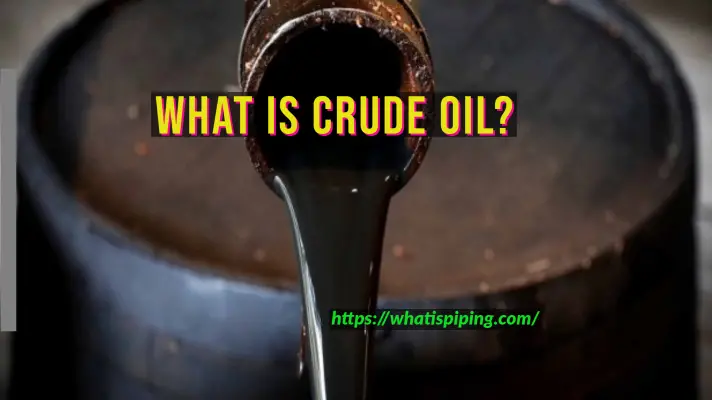The slurry is defined as a mixture of suspended solid particles and liquids. Various factors like the size and distribution of particles, level of turbulence, temperature, the concentration of solids in the liquid phase, size of the conduit, and viscosity of the carrier decide the physical characteristics of the slurry. In a slurry mixture, a carrying fluid held the solid particles in suspension. The common carrying fluids are water, crude oils with milled coal, and air in pneumatic conveying.
A slurry piping or pipeline system consists of pipelines, valves, and most importantly slurry pumps. A slurry is non-homogeneous, unlike the liquid or gas phase. Hence, the flow of slurry inside a pipe or pipeline system is very much different and they need special considerations. To flow inside a pipeline, the slurry has to overcome a deposition critical velocity. So if the flow velocity of the slurry is not sufficient, the suspension of solid particles will not be maintained. In a broader sense, the flow of slurry inside a pipe can be grouped into two categories:
- Homogeneous Slurry Flow where solids are distributed uniformly in the liquid carrier, and
- Heterogeneous Slurry Flow where solids are not uniformly mixed.
However, sometimes slurry flow can have intermediate or mixed flow regimes.
Examples of Slurry Piping System
In general, the slurry is liquid with solids suspended in it. Some of the industrial examples where slurry piping is used for slurry handling are:
- In coal washeries where coal particles are suspended in water.
- In the wax manufacturing process, where crystals are suspended in the solvent during the crystallization process.
- Feed for common filtration equipment.
- Pulp suspension is encountered in papermaking.
- Sludge in the effluent treatment process.
Factors Affecting Slurry Behaviour
The main design parameters that affect the behavior of slurry in slurry piping are:
- The solid concentration that is expressed in wt. % of solid
- Size and nature of solid particles (soft, hard, abrasive)
- Density, viscosity, chemical nature, and other properties of liquid
Slurry piping system design is governed by the following considerations:
- Solid deposition in the system should be avoided.
- Design should aim that there is no change in slurry composition from the inlet to the outlet of the system.
- Minimum wear and tear or erosion.
In the following section, we will discuss, the slurry piping system components in brief.
Line Sizing And Pressure Drop
The basic design steps for a slurry system are:
Identify slurry characteristics: Homogenous, heterogeneous, or mixed behavior.
Select slurry concentration: Solid concentration must be known as the specific gravity or density and the rheology of the slurry is dependent on solids concentration which in turn decides the pumping cost. At certain solid concentrations, Slurry will be unstable and very difficult to flow. In such a scenario, proper solids concentration must be known for proper design for transportation. A solid concentration 10-15% below the static settled Slurry concentration is considered stable and convenient for easy handling.
Select trial pipe size: In the next step, a trial pipe size needs to be selected to determine the design velocity using the following formula:
Volume flow rate = design velocity × area of cross-section.
The design velocity is important with respect to the critical velocity.
Critical Velocity:
For slurry systems, when the design velocity is less than the critical velocity of the slurry, the solids may start to separate from the mixture. So, the slurry piping design must aim for a velocity greater than the critical velocity for the given slurry. The critical velocity for a specified Slurry is dependent on various parameters like:
- Size and specific gravity of solids,
- Solids concentration viscosity of liquid and
- Degree of turbulence.
For homogeneous Slurry, the critical velocity is calculated as follows:
A) If the Slurry shows Newtonian behavior, then critical Reynolds’s No. is considered as 2100 and critical velocity is calculated using the following formula:
Critical Velocity =(Reynolds Number x Viscosity)/(Density x Pipe Diameter)
B) When the Slurry is the non-Newtonian type and exhibits Bingham plastics behavior, then critical velocity is calculated by finding the critical Reynolds Number from a chart.
In normal practice, the design velocity (Vd) should be greater than the critical velocity (Vc) by more than 0.3 m/s i.e (Vd-Vc)>0.3 m/s. If this criterion is not met, change the trial pipe size selection and follow the above-mentioned steps again.
Calculate design friction loss: When the selection of trial pipe size is satisfactory, calculate the pressure loss.
Calculate Pump Discharge Pressure: In the next step, calculate the pump discharge pressure, considering the elevation change of the system.
The slope of pipelines: The Slope provided in horizontal pipelines must not exceed the angle of repose for Slurry. There should be provisions for flushing and draining of pipelines and manual cleaning.
Slurry Piping and Pipeline Design Considerations
In general, the following design considerations can be followed while designing slurry piping systems:
- The use of Short and Direct Routes is preferred for slurry piping systems. It will ensure minimum pressure drop.
- Elbows shall be 5D or greater.
- Use Y connections in place of Tee branch connections.
- Minimize directional changes to avoid Wear.
- Remove all dead spots where solid accumulation is possible.
- Valves shall be installed horizontally. For manifolds, locate the valves as close to the manifold as possible.
- Use Eccentric Reducers Flat on Bottom type.
- Provide steam and cleaning oil bleed connections from the top of the slurry lines.
- Allow provision for cleaning to clear the solid build-up.
- Provide drain on the end-points of long lines.
- Ensure proper cleaning of such lines.
- Valves to be used shall be of maximum port size. For ball valves, it shall be full-port.
- Locate flushing connections at a minimum distance from the origin of the Slurry pipeline.
- Steel pipes lined with abrasion-resistant lining can highly improve the service life of slurry pipes.
- Due to greater continued exposure to the slurry, the bottom of the slurry pipes can wear quickly. So, if feasible rotating the pipe periodically will solve this problem.
ASME B 31.11 code provides guidelines for the design of Slurry transportation piping systems.
Slurry Pipelines
Slurry pipelines are used to move slurries for long distances. The main concern with slurry pipelines is pipe abrasion and the associated erosion loss. Various materials like carbon steel, stainless steel, abrasion-resistant lined pipes, alloy steel, hardened steel, non-ferrous pipes, HDPE, GRP, etc are used for transporting slurries. However, slurry pipeline material is decided based on the application, material being pumped, and cost. In recent times, there is a surge of non-ferrous slurry pipelines around the world.









thank you, they are very useful.
Good recollect my humble involvement in Chrome slurry in Bamnipal and later involved in Noamundi LRP jigging plant.
Thank you so much, what about slope of piping?
Hi. We have a borehole from surface to underground 1000 meters in fall at 7 degrees angle, 150mm diameter internal pipe dimension. When a consistent feed of slurry, SG 1.92, gets to the bottom of the borehole still at 150mm internal, it then reduces to 100mm internal pipe within 6 meters from bottom of borehole. What is your speed differential from 150mm to 100mm. Is it possible that slurry passing thru 100mm is so quick that the bottom of the borehole is nearly “emptying”. It’s also worth noting that the horizontal distance of the 100mm pipe is approximately 550 meters. Thank you.